13.2 Simulating the posterior
ggplot(weather, aes(x = humidity9am, y = raintomorrow)) +
geom_jitter(size = 0.2)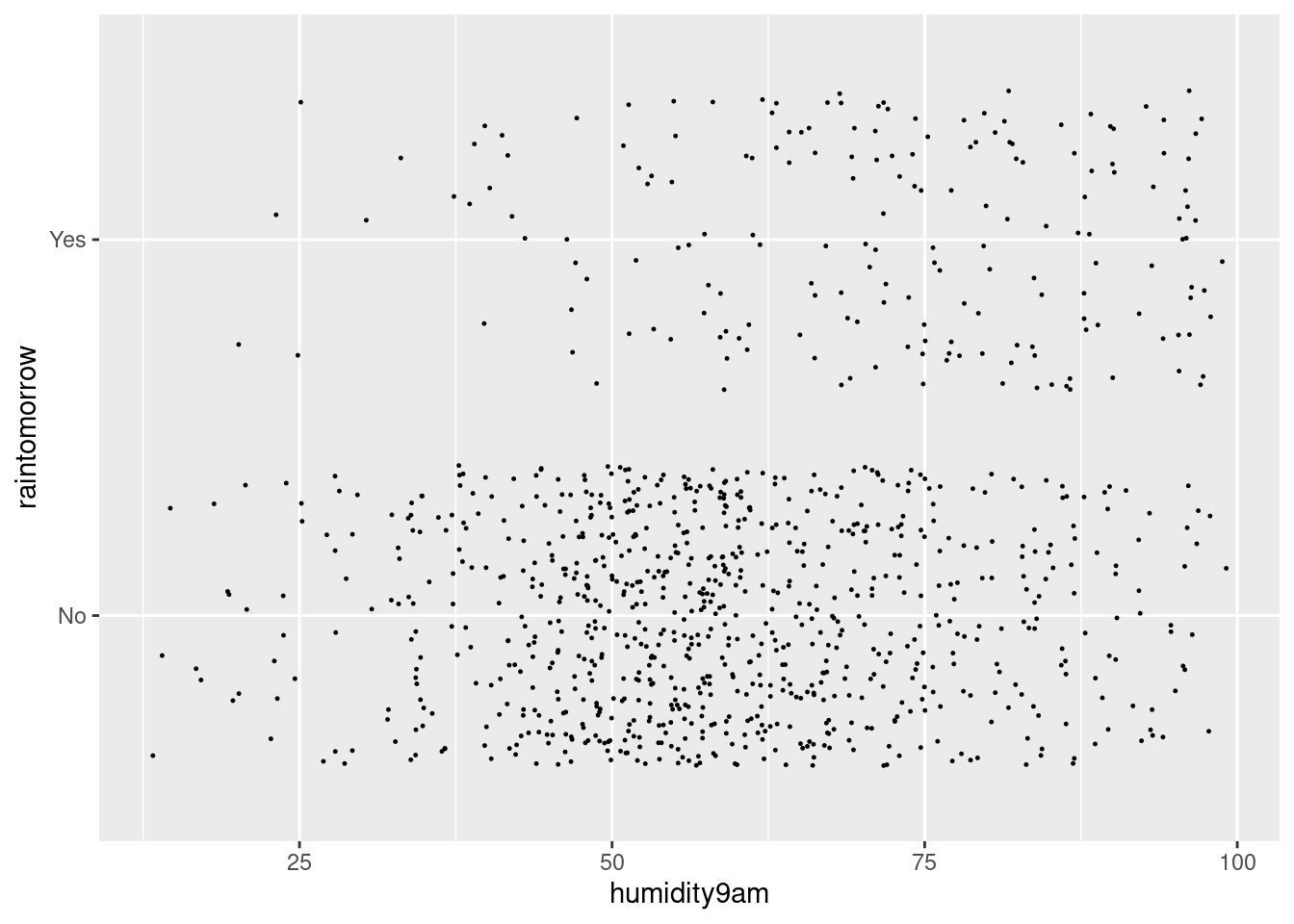
Calculate & plot the rain rate by humidity bracket:
weather %>%
mutate(humidity_bracket =
cut(humidity9am,
breaks = seq(10, 100, by = 10))) %>%
group_by(humidity_bracket) %>%
summarize(rain_rate = mean(raintomorrow == "Yes")) %>%
ggplot(aes(x = humidity_bracket, y = rain_rate)) +
geom_point() +
theme(axis.text.x = element_text(angle = 45, vjust = 0.5))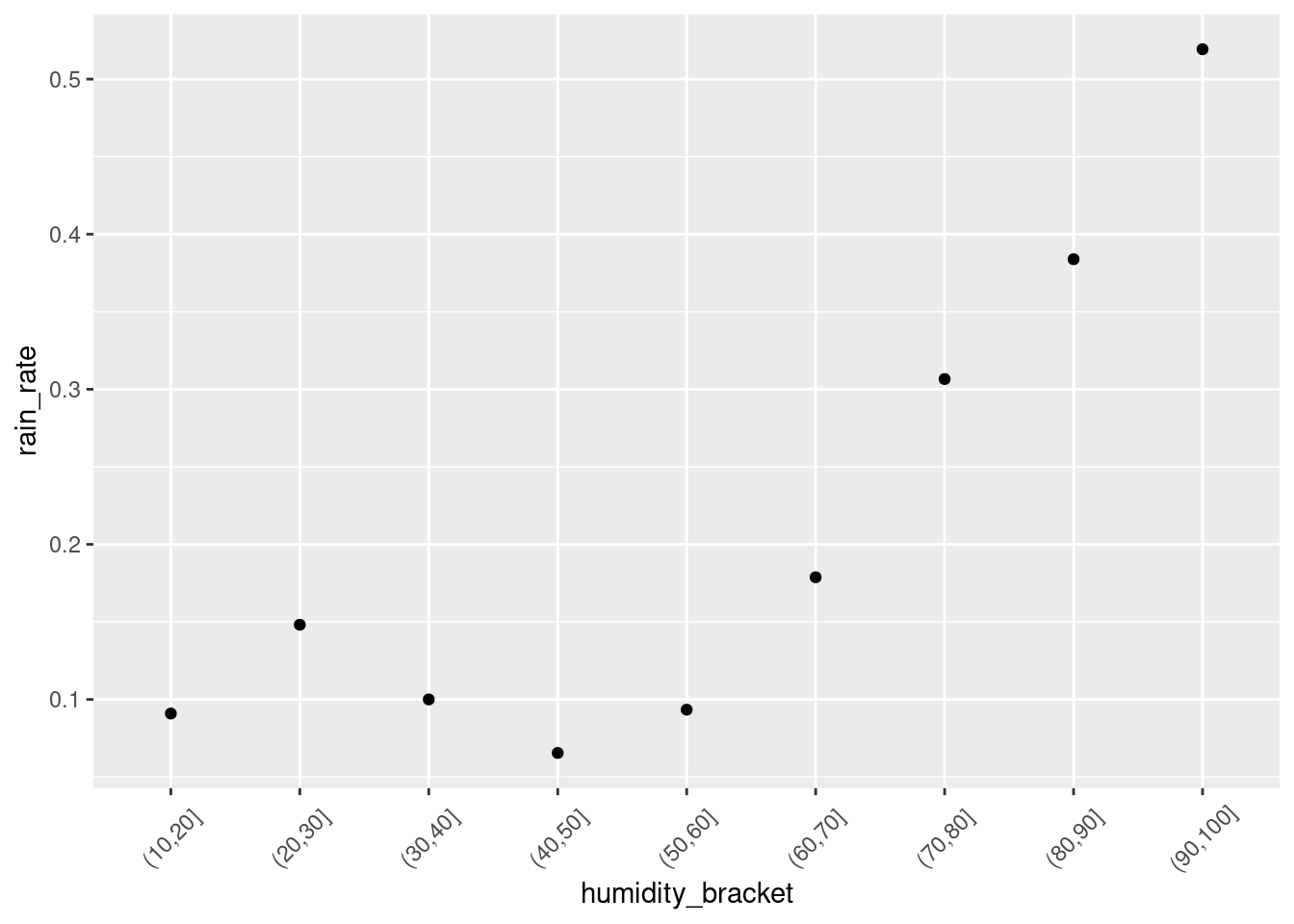
Simulate the model:
prior_PD = FALSErain_model_1 <- update(rain_model_prior, prior_PD = FALSE)
rain_model_1Check the stability of the simulation results before proceeding:
MCMC trace, density, & autocorrelation plots
mcmc_trace(rain_model_1)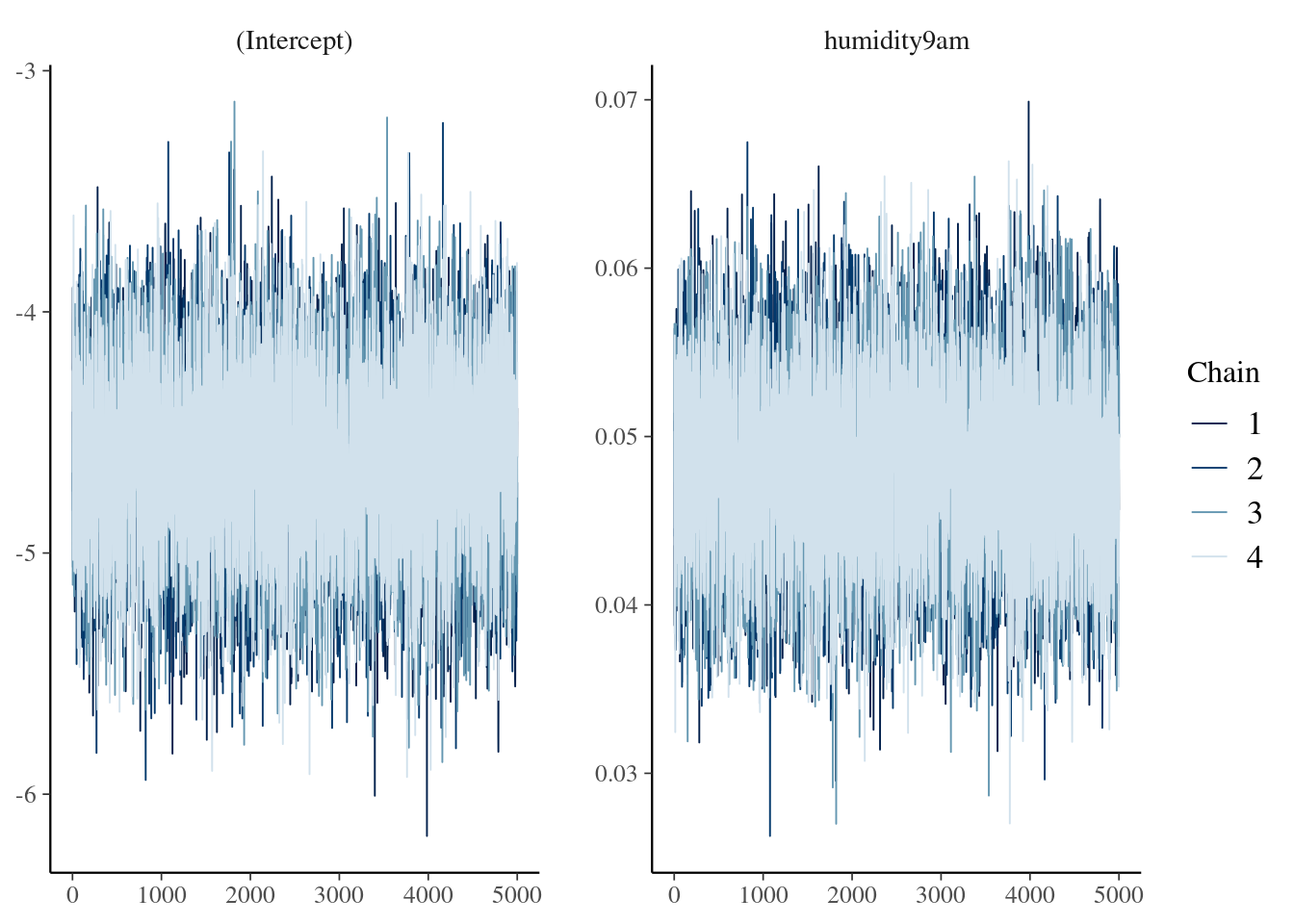
mcmc_dens_overlay(rain_model_1)
mcmc_acf(rain_model_1)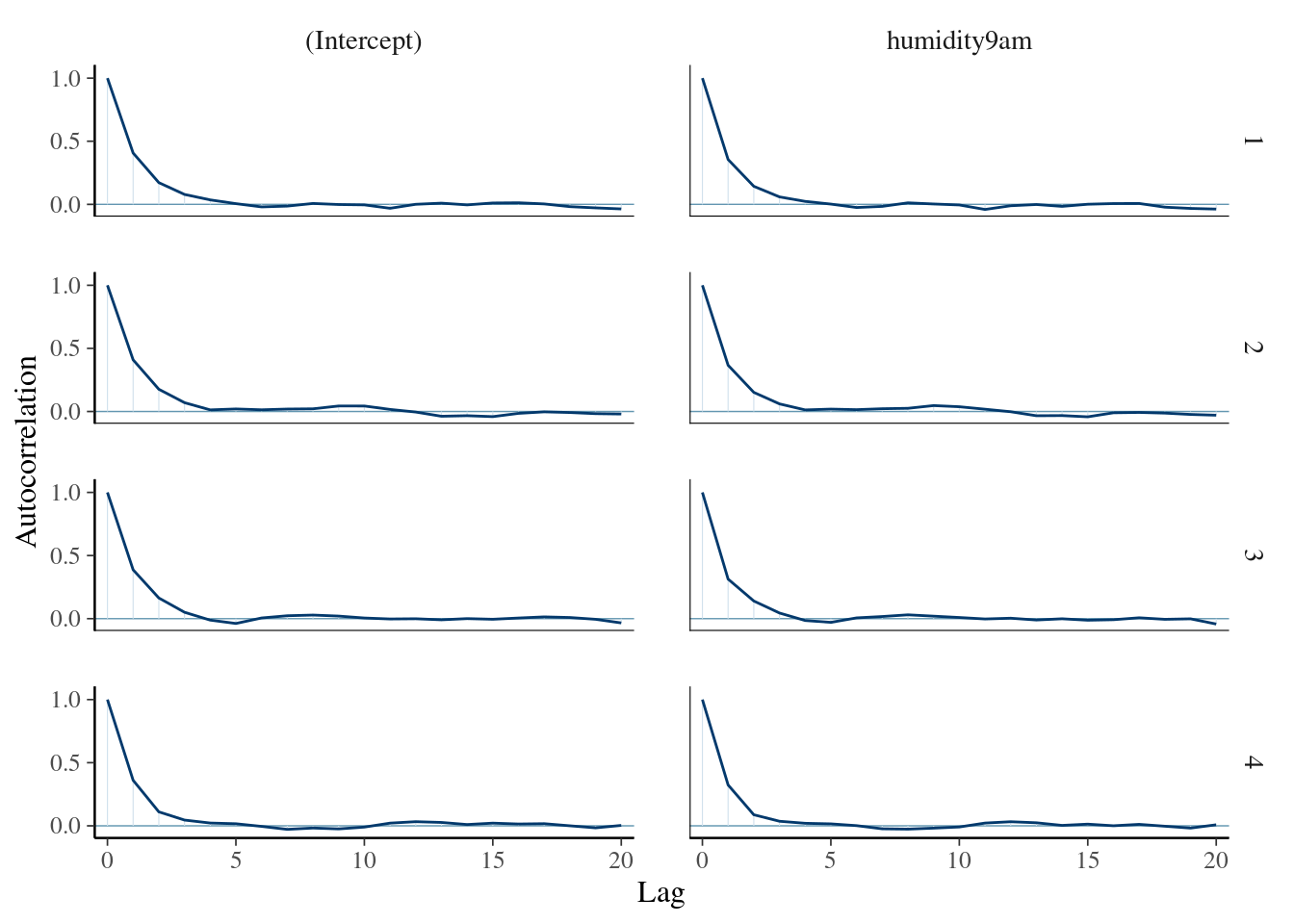
Plot the posterior model results:
weather %>%
add_fitted_draws(rain_model_1, n = 100) %>%
ggplot(aes(x = humidity9am, y = raintomorrow)) +
geom_line(aes(y = .value, group = .draw), alpha = 0.15) +
labs(y = "probability of rain")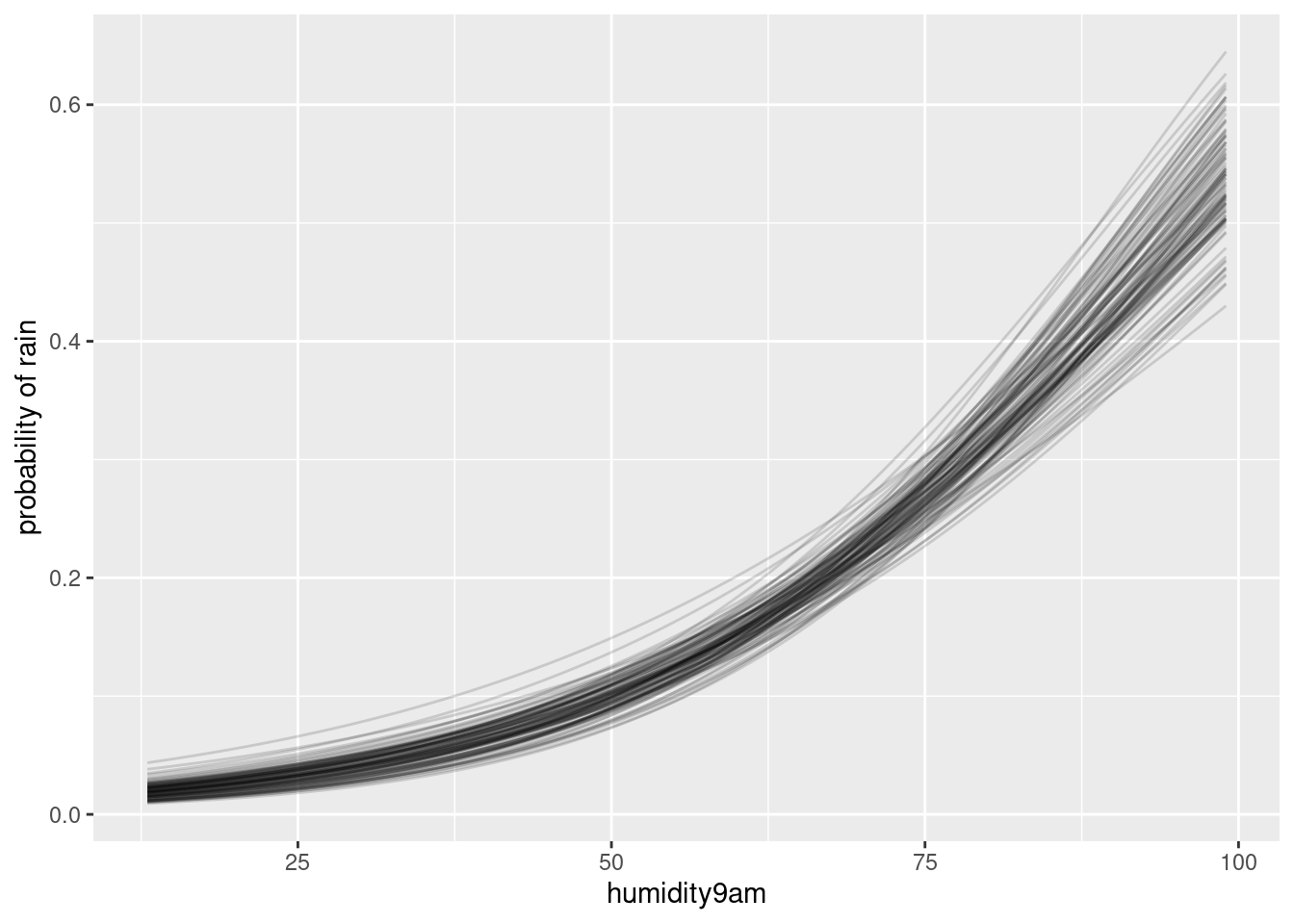
Posterior summaries on the log(odds) scale
posterior_interval(rain_model_1, prob = 0.80)## 10% 90%
## (Intercept) -5.08784667 -4.13449813
## humidity9am 0.04146719 0.05487265Posterior summaries on the odds scale
exp(posterior_interval(rain_model_1, prob = 0.80))## 10% 90%
## (Intercept) 0.006171294 0.0160107
## humidity9am 1.042338958 1.0564061